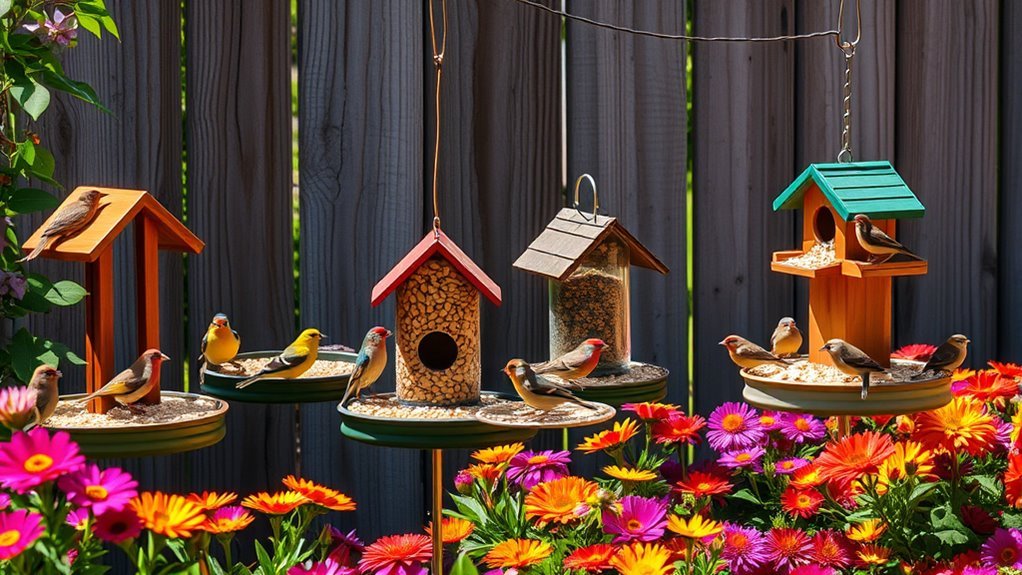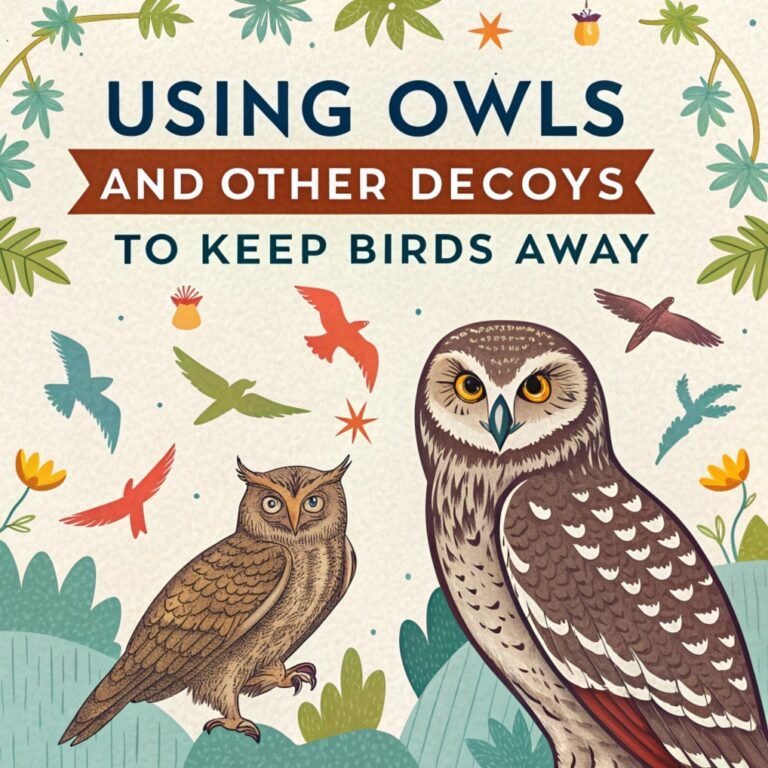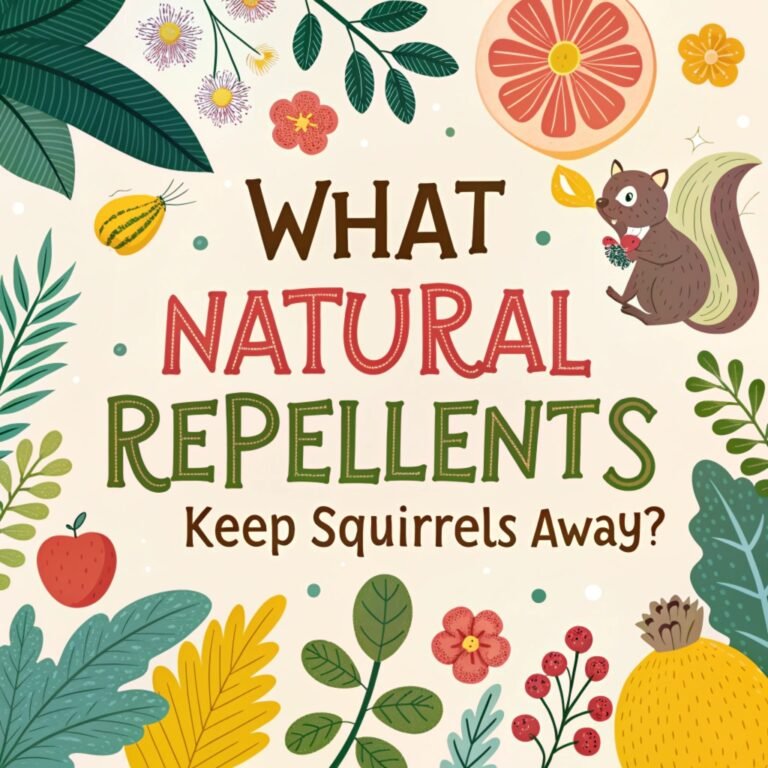Washington State Local Backyard Bird Guide
Washington State offers a wonderful variety of local birds that can add charm to your backyard. You might see the bright American goldfinch and the adaptable house finch. Learning about their habits and preferences can help you attract these birds.
To create an inviting backyard, think beyond just filling feeders. You can make your yard more appealing by adding native plants, providing water sources, and ensuring safe perching spots. These steps can boost bird diversity in your space. Would you like to know more about attracting these lovely birds?
Key Takeaways
- Common backyard birds in Washington include American goldfinches, house finches, and dark-eyed juncos, depending on the season.
- Diverse bird feeders, such as tube feeders for finches and platform feeders for larger birds, attract various species.
- Winter feeders should offer seeds like sunflower to attract cardinals and enhance birdwatching opportunities.
- Proper placement of birdbaths and feeders near trees or shrubs ensures safety and comfort for visiting birds.
- Observing seasonal migrations can lead to unique sightings of various bird species throughout the year in Washington State.
Common Backyard Birds in Washington State

In Washington State, you'll find many common backyard birds that bring color and life to your garden.
In spring and summer, you can see songbirds like the bright American goldfinch and the friendly house finch. They add pleasant sounds to your outdoor space.
During migration, look for the graceful red-tailed hawk soaring above or the colorful western tanager as they pass through.
In winter, resident birds like the tough dark-eyed junco come to your feeders for food.
Watching these birds helps you connect with nature and appreciate the lively ecosystem around you.
Enjoy their beauty and variety.
Attracting Birds to Your Yard
Creating a bird-friendly yard makes your outdoor space more inviting and fun. Start by placing a birdbath in a quiet area near shrubs or trees. This setup gives birds a safe spot to drink and bathe, encouraging them to visit regularly.
Next, set up different types of bird feeders. Tube feeders are great for finches and sparrows, while platform feeders attract various birds. Make sure to space the feeders apart. This distance helps reduce competition between birds and allows them to feed comfortably.
With these simple steps, you can easily attract a variety of birds to your yard, enhancing your outdoor experience.
Bird Feeding Basics

Setting up bird feeders in your yard is the first step in bird feeding.
You must choose the right seeds and feeders to attract different birds. For example, sunflower seeds attract cardinals, while nyjer seeds bring in finches.
Select the appropriate feeder for each type of seed; use tube feeders for small seeds and platform feeders for larger ones.
Location matters too. Place your feeders near trees or shrubs so birds feel safe while they eat.
Clean the feeders regularly to avoid spreading disease.
Nesting Habits of Local Birds
Local birds show interesting nesting habits that differ by species. Many collect materials like twigs, grasses, feathers, and even items made by humans to build their nests.
For example, chickadees often choose tree cavities while wrens prefer dense shrubs. The mother bird incubates the eggs to keep them warm and safe from threats.
Watch for the male bird, as he often brings food to the female during this time.
Birdwatching Tips and Techniques

Birdwatching turns quiet moments in your backyard into exciting experiences with birds.
To improve your skills, use your binoculars correctly: keep your elbows steady and focus slowly to see distant birds clearly.
Watch for seasonal migrations; these times allow you to see different species in your area. Stay close to water sources or feeders to attract more birds.
Be patient; stay still and quiet so you can see nature unfold around you.
Pay attention to bird behaviors and colors to connect with your local ecosystem.
Birdwatching is about enjoying nature and being part of a community that loves birds.
Identifying Bird Calls and Songs
Enhance your backyard birdwatching by learning to identify bird calls and songs. Recognizing these sounds increases your connection to nature. You'll notice unique call variations and song patterns that define each bird species.
- Differentiate between cheerful chirps and soft coos.
- Understand the rhythm of a sparrow's call.
- Relate seasonal changes to specific song patterns.
- Distinguish alarm calls from mating calls.
- Join local birdwatching groups to learn from others.
Spending time on this auditory exploration improves your birdwatching experience. Knowing these sounds allows you to appreciate fleeting moments of beauty in nature, helping you feel more connected to the vibrant ecosystem around you.
Enjoy the harmony of the wild!
Protecting Birds and Their Habitats
As you enjoy backyard birdwatching, remember that protecting birds and their habitats is crucial for their survival.
You can help by creating friendly spaces for birds, such as planting native plants that provide food and shelter. Consider how habitat loss affects bird migration and nesting. Simple changes in your yard can make a big difference.
Join local conservation groups to help restore wetlands or forests. This work supports biodiversity and ecological balance.
Your efforts help the bird community and connect you to nature and other bird lovers. By supporting sustainable practices, you create a welcoming habitat for birds, making your backyard experience more enjoyable.
Frequently Asked Questions
What Is the Best Time of Year for Birdwatching in Washington State?
The best time for birdwatching in Washington State is during spring migration. During this time, birds return and display vibrant colors. Their seasonal behaviors are fascinating to observe. You can witness their journeys firsthand and feel a connection to nature through this experience.
How Can I Keep My Pet Safe Around Backyard Birds?
To keep your pet safe around backyard birds, train them to stay calm. Teach them to observe birds from a distance instead of chasing them. Use positive reinforcement to reward your pet for good behavior. This approach helps create a peaceful environment for both your pet and the birds. With patience, your pet can learn to coexist with the birds safely.
Are There Any Bird Conservation Organizations in Washington State?
Yes, Washington State has several bird conservation organizations. These groups work to protect bird habitats and promote conservation efforts. By joining or supporting these organizations, you can connect with local wildlife and take action to protect birds. This involvement can be both rewarding and impactful for the environment.
What Types of Plants Attract Specific Bird Species?
To attract specific birds, plant native species, flowering shrubs, and fruit trees in your garden. Adding bird feeders will enhance their appeal. These plants and feeders create a welcoming space for birds, increasing the variety of wildlife you may see and fostering a deeper connection to nature. Enjoy watching the birds that visit your garden and help support local ecosystems.
How Do Climate Changes Affect Local Bird Populations?
Climate changes significantly affect local bird populations. They disrupt migratory patterns and food sources. Birds exhibit altered behaviors as they adapt to new temperatures. These changes impact their habitats and reduce diversity in your backyard. By observing local birdlife, you can see these influences in real-time. Understanding these shifts helps us appreciate and protect the birds we love.

Hello, I’m Amelia White, the founder of birdsfanatic.com. As a lifelong bird enthusiast and spiritual seeker, I’ve always been fascinated by the mystical connections between birds and the human experience. On this site, I share my knowledge and insights into the symbolic meanings and spiritual significance of various bird species, exploring their roles in mythology, folklore, and cultural traditions. Join me on this journey into the world of birds, where we’ll discover the hidden wisdom and guidance that these magnificent creatures have to offer.







